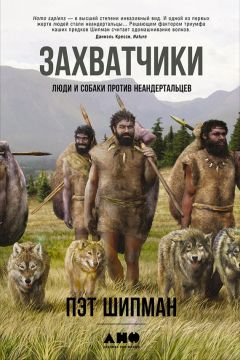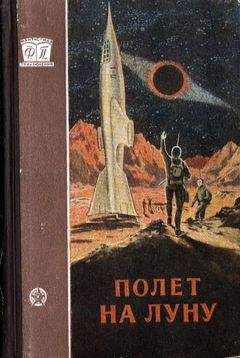Ознакомительная версия.
12
Hortola P., Martfnez-Navarro B. The Quaternary Megafaunal Extinction and the Fate of Neanderthals: An Integrative Working Hypothesis Quaternary International. 295. 2013. P. 69–72.
Executive Order 13112 of February 3, 1999, Invasive Species Federal Register 64, no. 25, February 8,1999, Presidential Documents 6183.
Executive Order 13112 of February 3, 1999, Invasive Species Federal Register 64, no. 25, February 8,1999, Presidential Documents 6183.
Vermeij G. J. Invasion as Expectation: A Historical Fact of Life // Species Invasions: Insights into Ecology, Evolution, and Biogeography. Sunderland, MA: Sinauer Associates. 2005, 315–339.
Minimum Viable Population Size: A Meta-Analysis of 30 Years of Published Estimates/Traill L., Corey J., Bradshaw C. et al. // Biological Conservation. 1339. 2007, 159–166.
O'Connell J., Allen J. The Restaurant at the End of the Universe: Modelling the Colonisation of Sahul // Australian Archaeology. 74. 2012, 5–31.
Davidson I. Peopling the Last New Worlds: The First Colonisation of Sahul and the Americas // Quaternary International. 285. 2013, 1–29.
Williams A. A New Population Curve for Prehistoric Australia // Proceedings of the Royal Society B. 280. 2013. 20130486, http://dx.doi.org/10.1098/rspb.2013.0486; O'Connell and Allen, «Restaurant at the End of the Universe.»
Watson T. Who Were the First Australians, and How Many Were There? // Science Now. 23 апреля 2013. Цитата Алана Вильямса.
Lockwood J., Hoopes M., Marchetti M. Invasion Ecology (Maiden, MA: Blackwell, 2007); A Proposed Unified Framework for Biological Invasions/Blackburn T., Pysek P., Bacher S. et al. // Trends in Ecology and Evolution. 26. 2011, 333–339, doi:10.1016/j.tree.2011.03.023; Grasping at the Routes of Biological Invasions: A Framework for Integrating Pathways into Policy/Hulme P., Bacher S., Kenis M. et al. // Journal of Applied Ecology AS. 2008, 403–414.
Leakey R., Lewin R. The Sixth Extinction. New York: Anchor Books, 1996; Kolbert E. The Sixth Extinction: An Unnatural History. New York: Henry Holt, 2014.
Wilcove D., Rothstein D., Dubow J. et al., «Quantifying h reats to Imperiled Species in the United States,» BioScience 48 (1998): 607–615; Sala O., Chapin III F.,S., Armesto J., et al., «Global Biodiversity Scenarios for the Year 2100,» Science 287 (2000): P. 1770–1774.
Clavero M., Garcia-Berthou E. Invasive Species Are a Leading Cause of Animal Extinctions // Trends in Ecology and Evolution. 20. 2005, 110.
Elton C. The Ecology of Invasions by Animals and Plants. London: Methuen, 1958. На русском языке книга была опубликована в 1960 г. Издательством иностранной литературы: Элтон Ч. Экология нашествий животных и растений/Пер. с англ. под ред. Н. П. Наумова. – М.: Издательство иностранной литературы, 1960.
Krings M., Geisert H., Schmitz R. et al. DNA Sequence of the Mitochondrial Hypervariable Region II from the Neandertal Type Specimen // Proceedings of the National Academy of Sciences USA. 96. 1999, 5581.
Krings M., Stone A., Schmitz R. et al. Neandertal DNA Sequences and the Origin of Modern Humans // Cell. 90. 1997, 19–30; Green R., Krause J., Ptak S. et al. Analysis of One Million Base Pairs of Neanderthal DNA // Nature. 444. 2006, 330–336; Noonan J. Neanderthal Genomics and the Evolution of Modern Humans // Genome Research. 20. 2010, 547–553; Noonan J., Coop G., Kudaravalli S. et al. Sequencing and Analysis of Neanderthal Genomic DNA // Science. 314. 2006, 1113–1118; Green R., Krause J., Briggs A. et al. A Draft Sequence of the Neandertal Genome // Science. 328. 2010, 710–722. doi: 10.1126/science.H88021; Priifer K., Racimo F., Patterson N. et al. The Complete Genome Sequence of a Neanderthal from the Altai Mountains // Nature. 505. 2014, 43–49. doi: 10.1038/naturel2886
Neanderthal Genome Yields Insights into Human Evolution and Evidence of Interbreeding with Modern Humans // Science News. 6 мая 2010.
Neanderthal Genome Yields Insights into Human Evolution and Evidence of Interbreeding with Modern Humans // Science News. 6 мая 2010.
Eriksson A., Manica А. Effect of Ancient Population Structure on the Degree of Polymorphism Shared between Modern Human Populations and Ancient Hominins // Proceedings of the National Academy of Sciences USA. 109. 2012, 13965–13960.
Prüfer K., Racimo F., Patterson N. et al. The Complete Genome Sequence of a Neanderthal from the Altai Mountains // Nature. 505 no. 7481. 2014, 43–49, doi: 10.1038/naturel2886
Sarah Tischkoff, из личных разговоров с автором, 5 февраля 2014.
Vernot B., Akey J. M. Resurrecting Surviving Neandertal Lineages from Modern Human Genomes // Science Express. 29 января 2014, 1–4, doi 2014/0.1126/science.l245938
Froehle A., Churchill S. Energetic Competition between Neandertals and Anatomically Modern Humans // Paleoanthropology. 2009, 96–116; Ruff C., Trinkaus E., Holliday T. Body Mass and Encephalization in Pleistocene Homo // Nature. 387. 1997, 173–176; Ruff C., из личных разговоров с автором, 25 июля 2012 г.
Bar-Yosef O., Bordes J. G. Who Were the Makers of the Chatelperronian Culture? // Journal of Human Evolution. 59. 2010, 586–593; Higham T., Jacobi R., Julien M. et al. Chronology of the Grotte du Renne (France) and Implications for the Context of Ornaments and Human Remains within the Chatelperronian // Proceedings of the National Academy of Sciences USA. 107. 2010, 20234–20239; Gravina B., Mellars R., Bronk Ramsey C. Radiocarbon Dating of Interstratified Neanderthal and Early Modern Human Occupations at the Chatelperronian Typesite // Nature. 438. 2005, 51–56; Mellars P., Gravina B., Bronk Ramsey C. Confirmation of Neanderthal/Modern Human Interstratification at the Chatelperronian Type-Site // Proceedings of the National Academy of Sciences USA. 104. 2006, 3657–3662; Zilhao J., d'Errico F., Bordes J.-G. et al. Analysis of Aurignacian Interstratification at the Chatelperronian Type Site and Implications for the Behavioral Modernity of Neandertals // Proceedings of the National Academy of Sciences USA. 103. 2006, 12643–12648.
Caron F., d'Errico F., Del Moral P. et al. The Reality of Neandertal Symbolic Behavior at the Grotte du Renne, Arcy-sur-Cure, France // PLoS ONE. 6. 2011. e21545, doi: 10.1371/journal.pone.0021545.
Wood R., Barroso-Ruiz C., Caparros M. et al. Radiocarbon Dating Casts Doubt on the Chronology of the Middle to Upper Palaeolithic Transition in Southern Iberia // Proceedings of the National Academy of Sciences USA. 110. 2013, 2781–2786, doi: 10.1073/Proceedings of the National Academy of Sciences USA. 1207656110.
Higham T., Douka K., Wood R. et al. The Timing and Spatio-Temporal Patterning of Neanderthal Disappearance // Nature. 512. 2014, 306–309, doi: 10.1038/naturel3621. Supplementary Methods
Wood R., Douka K., Boscato P. et al. Testing the ABOx-SC Method: Dating Known-Age Charcoals Associated with the Campanian Ignimbrite // Quaternary Geochronology. 9. 2012, 16–26.
Wood R. et al. Radiocarbon Dating Casts Doubt. 4.
Callaway E. Date with History // Nature. 485. 2013, 27–29; Pinhasa R., Higham T., Golovanova L. et al. Revised Age of Late Neanderthal Occupation and the End of the Middle Paleolithic in the Northern Caucasus // Proceedings of the National Academy of Sciences USA. 108. 2011, 8616.
Amos J. Last-Stand Neanderthals Queried // BBC News. 05.02.2013 г. http://www.bbcxo.uk/news/science-environment-21330194
T. Higham, из личных разговоров с автором, 28 июня 2013.
Golovanova L., Doronichev B., Cleghorn N. et al. Significance of Ecological Factors in the Middle to Upper Paleolithic Transition // Current Anthropology. 51. 2010, 655–691.
Pinhasa et al. Revised Age of Late Neanderthal Occupation.
Higham T., Basell L., Jacobi R., Wood R. et al. Testing Models for the Beginnings of the Aurignacian and the Advent of Figurative Art and Music: The Radiocarbon Chronology of Geissenklösterle // Journal of Human Evolution. 62. 2012, 665.
Higham T., Compton T., Stringer C. et al. The Earliest Evidence for Anatomically Modern Humans in Northwestern Europe // Nature. 479. 2011, 521–524, doi: 10.1038/naturel0484
Higham T. et al. Timing and Spatio-Temporal Patterning.
Savoleinen P., Leitner T., Wilton A. et al. A Detailed Picture of the Origin of the Australian Dingo, Obtained from the Study of Mitochondrial DNA // Proceedings of the National Academy of Sciences USA. 101. 2004, 12387–12390.
Shipman P. The Animal Connection.
Zalasiewicz J., Williams M., Smith A. et al. Are We Now Living in the Anthropocene? // GSA Today 18. N. 2. 2008, 4–8, doi: 10.1130/GSAT01802A. l; Zalasiewicz J., Williams M., Steffen W. et al. The New World of the Anthropocene // Environmental Science and Technology. 44. 2010, 2228–2231; Crutzen P., Stoermer E. Tie Anthropocene // Global Change Newsletter. 41. 2000, 17–18.
MiiHer U., Pross J., Tzedakis P. et al. The Role of Climate in the Spread of Modern Humans into Europe // Quaternary Sciences Review. 30. 2011, 273–279; Хороший обзор представлен в публикации Национального центра климатических данных A Paleo Perspective on Abrupt Climate Change (http://www.ncdc.noaa.gov/paleo/abrupt/data3.html).
Lowe J., Barton N., Blockley S. et al. Volcanic Ash Layers Illuminate the Resilience of Neanderthals and Early Modern Humans to Natural Hazards // Proceedings of the National Academy of Sciences USA. 109. 2012, 13532–13537, doi: 10.1073/pnas.l204579109; Hublin J.-J. Hie Earliest Modern Human Colonization of Europe // Proceedings of the National Academy of Sciences USA. 109. 2012, 13471–13472.
Lowe et al. Volcanic Ash Layers. 13532.
Lowe et al. Volcanic Ash Layers, с. 13536.
Arensburg B. Human Remains from Geula Cave, Haifa // Bulletins et memoires de la Societe dAnthropologie de Paris. 14. 2002, 141–148.
Shea J. The Archaeology of an Illusion: Hie Middle Paleolithic Transition in the Levant // Vie Lower and Middle Palaeolithic in the Middle East and Neighboring Regions. Eds. J.-M. Le Tensorer, R. Jagher, and M. Otte (Basel Symposium, Eraul, Liege). 2008, 169–182.
Brown K., Marean C., Jacobs Z. et al. An Early and Enduring Advanced Technology Originating 71,000 Years Ago in South Africa // Nature. 491. 2012, 590–593.
Shea. Archaeology of an Illusion. 177.
Demeter F., Shackelford L., Bacon A.-M. et al. Anatomically Modern Human in Southeast Asia (Laos) by 46 ka // Proceedings of the National Academy of Sciences USA. 109. 2012, 14375–14380.
Pierret A., Zeitoun V., Forestier H. Irreconcilable Differences between Stratigraphy and Direct Dating Cast Doubts upon the Status of Tam Pa Ling Fossil // Proceedings of the National Academy of Sciences USA. 109. 2012. E3523, www.pnas.org/cgi/doi/10.1073/pnas. 1216774109; см. также Demetera F., Shackleford L., Westaway K. et al. Reply to Pierret et al.: Stratigraphic and Dating Consistency Reinforces the Status of Tam Pa Ling Fossil // Proceedings of the National Academy of Sciences USA. 109. 2012. E3524-E3525.
Bae C., Wang W., Zhao J. et al. Modern Human Teeth from Late Pleistocene Luna Cave (Guangxi, China) // Quaternary International (принята к печати), исправленная редакция доступна онлайн с 28 июля 2014 г.
Higham et al. Earliest Evidence for Anatomically Modern Humans; Benazzi S., Douka K., Fornai C. et al. Early Dispersal of Modern Humans in Europe and Implications for Neanderthal Behavior // Nature. 479. 2011, 525–528; Higham T., Stringer C., Douka K. Dating Europe's Oldest Modern Humans // British Archaeology. Январь – февраль 2012 г., с. 24–29.
Trinkaus E., Moldovan O., Milota S. et al. An Early Modern Human from the Pestera cu Oase, Romania // Proceedings of the National Academy of Sciences USA. 100. 2003, 11231–11236; Higham et al. Dating Europe's Oldest.
Finlayson C. Neanderthals and Modern Humans: An Ecological and Evolutionary Perspective/Cambridge: Cambridge University Press. 2004.
Finlayson C. Neanderthals and Modern Humans: An Ecological and Evolutionary Perspective/Cambridge: Cambridge University Press. 2004, с. 153.
Finlayson C. Neanderthals and Modern Humans: An Ecological and Evolutionary Perspective/Cambridge: Cambridge University Press. 2004, с. 154.
Cahill A., Aiello-Lammens M., Fisher-Reid M. et al. How Does Climate Change Cause Extinction? // Proceedings of the Royal Society B. 280. 2013, 2–3.
Finlayson C. Neanderthals and Modern Humans. 153.
См. обсуждение в книге Trinkaus E., Shipman P. The Neanderthals/New York: Knopf. 1992.
Ознакомительная версия.





